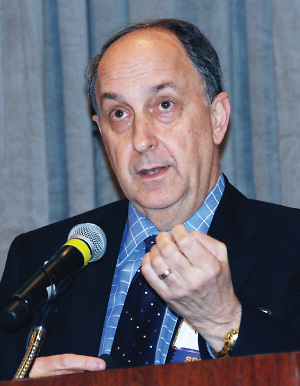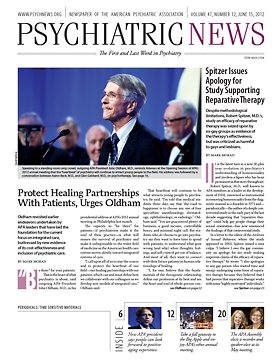Psychotherapy and neurobiology intertwine in any consideration of borderline personality disorder (BPD), said Glen Gabbard, M.D., at a symposium marking the opening of the new Menninger Clinic campus in Houston.
A number of psychosocial therapies have been tried, with varying success, to treat BPD, raising the question of how so many different approaches can produce relatively similar outcomes.
Patient variations and the therapeutic alliance may explain why each of these psychotherapies works with some patients but not others.
“Probably, though, all these approaches act through similar underlying neurophysiological processes,” said Gabbard, a clinical professor of psychiatry at Baylor College of Medicine and a professor of psychiatry at SUNY Upstate Medical Center in Syracuse, N.Y. Essentially, BPD patients don’t seem to engage cognitive-control regions of the brain as well as healthy people do.
BPD appears to have a heterogeneous etiology, he said. As many as 60 percent to 80 percent of cases relate to child trauma, which is linked to serotonergic dysregulation.
“You can’t just blame the parents, though,” said Gabbard, a psychoanalyst. “It’s a complex mixture of genes and environment.”
A high rate of opiate abuse among BPD patients suggests that opioid deficiency may play a role too.
Hyperreactivity of the amygdala and reduced regulation by the prefrontal cortex and the anterior cingulate cortex are likely involved as well, he said. Since amygdalar hyperactivity is modified by increased activity of the prefrontal cortex, the therapeutic relationship helps to sharpen the patient’s self-observational ability to re-appraise perceptions, assumptions, and beliefs.
Treatment takes effort by both therapist and patient, he noted. “You have to get the patient’s attention and get them to redirect mental resources away from lower limbic responses and to think more than just react,” Gabbard said. “Take affective distress signals and bring thinking to bear on them in new ways.”
This can create stress for both parties, and therapists have to manage countertransference issues using consultation, supervision, and a measure of self-reflection.
Gabbard said he is now more of a psychoeducator than in the past, explaining to patients how they can live with doubt and uncertainty while he discusses biological predispositions, stressors, and triggers with them. “We help the patient to bear what one person cannot bear,” he concluded.
Why So Few Antidepressants in Development?
Former APA President Alan Schatzberg, M.D., a professor of psychiatry at Stanford University School of Medicine, also spoke at the symposium.
He noted that the number of antidepressant drugs in development has declined from 95 five years ago to 22 today. This is due in part to the high costs of drug development as well as the high failure rates in phase 3 clinical trials. Pharmaceutical companies may cancel drug development for cost reasons rather than undertake another study with, for example, a higher dose.
In addition, placebo response rates have risen in trials in recent years while drug response rates have remained constant. A higher placebo rate means more difficulty in obtaining Food and Drug Administration approval, he said. Placebo responses are often high in geriatric or pediatric patient cohorts or when patients with lower symptom severity are included.
“Remember, the placebo arm is not the equivalent of nontreatment,” he pointed out. The support and attention of medical personnel have an effect as well, blurring the difference in response.
While fewer new antidepressants are in the works, both drug companies and insurers are taking a greater interest in agents intended to augment existing drugs, said Schatzberg. “They are not doing the same with cancer or cardiovascular drugs, which raises an issue for advocacy.”
Augmentation is attractive to the drug companies because drug nonresponse is a given in clinical trial participants, and placebo responders have been weeded out of trial cohorts, he said. The use of antipsychotic drugs as adjuncts for major depressive disorder was “not a bad way to go,” but side effects such as weight gain, akathisia, and metabolic problems remained a concern.
Devices like transcranial magnetic stimulation or deep brain stimulation have proven promising so far but are not cures.
The Institute of Medicine’s initiative on identifying biomarkers and drug targets and the National Institute of Mental Health’s Research Domain Criteria program may further stimulate drug or device development, said Schatzberg.
“We have to advocate to Congress, to the pharmaceutical companies, and to the venture capitalists for greater support for research,” he stated.


